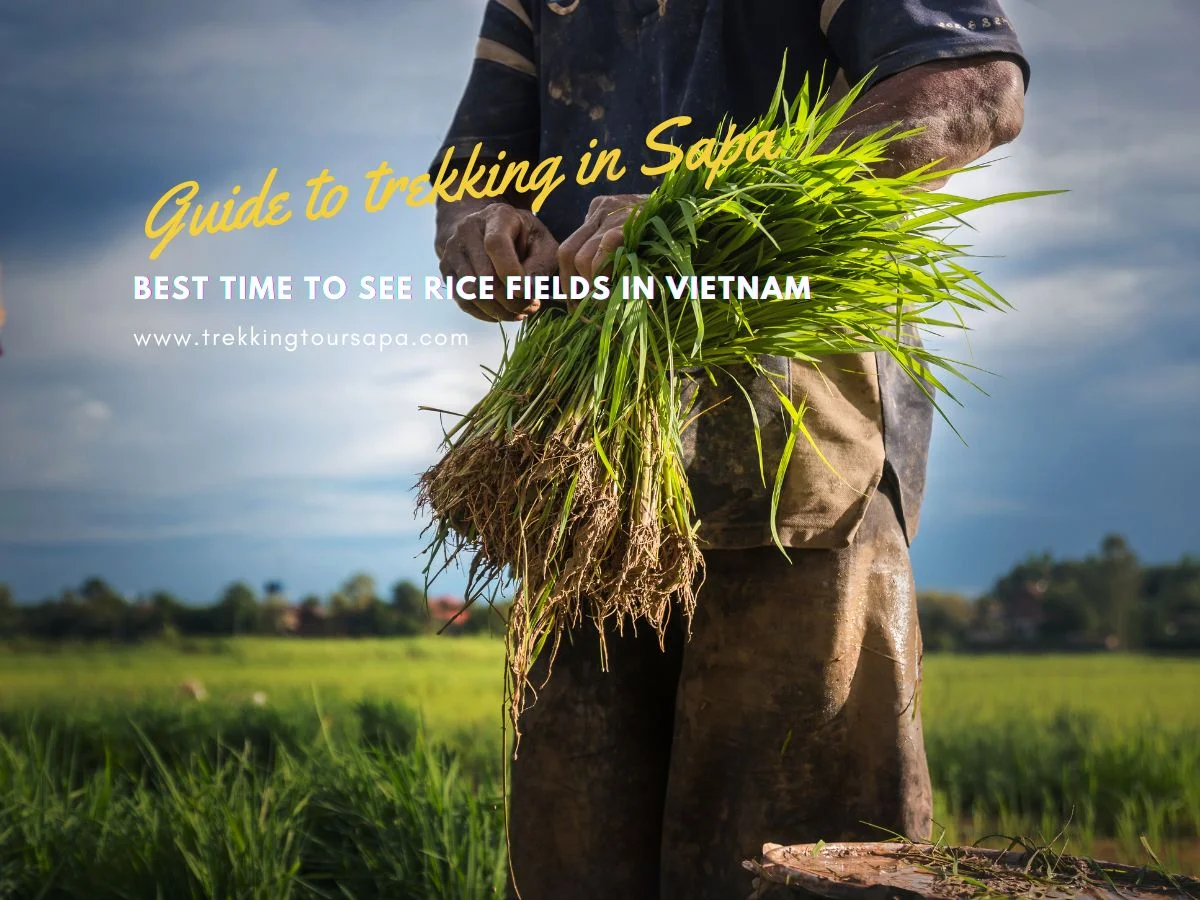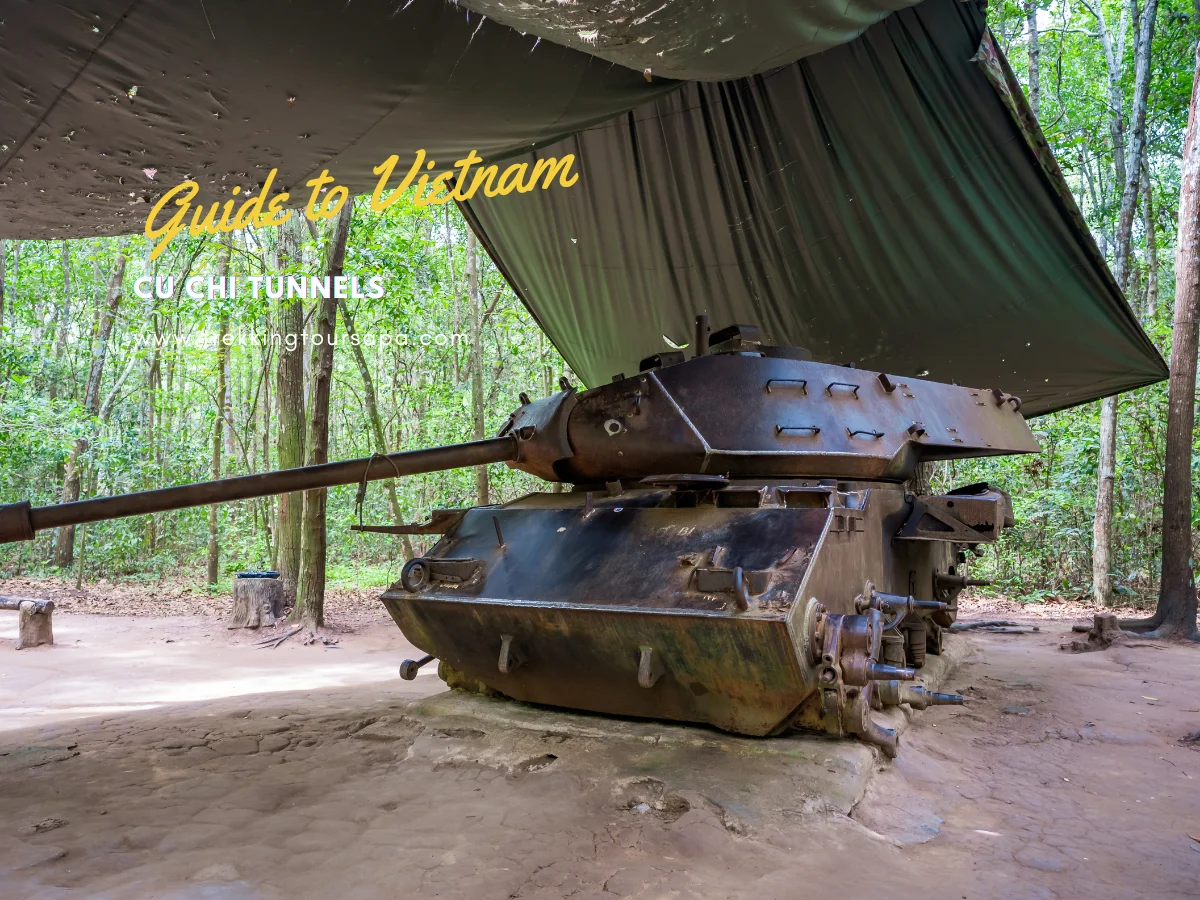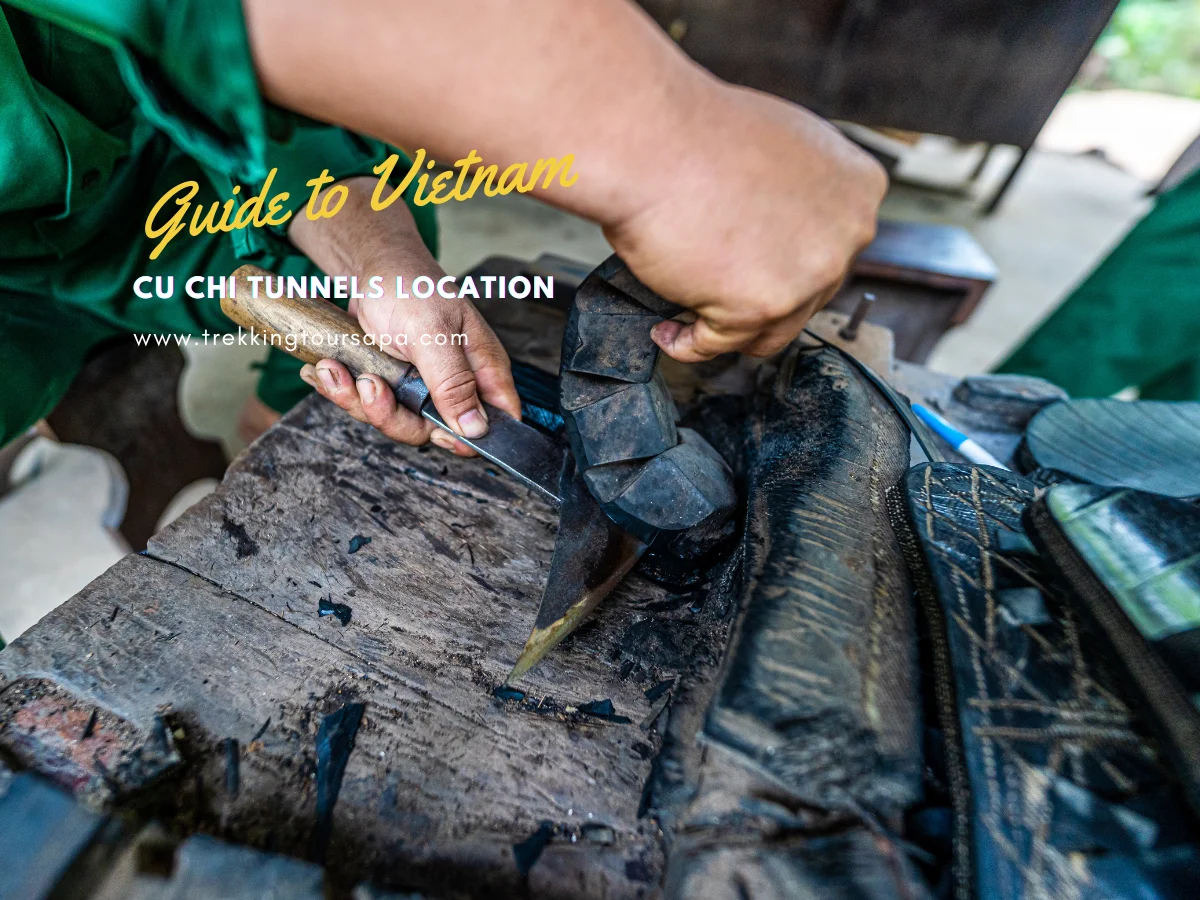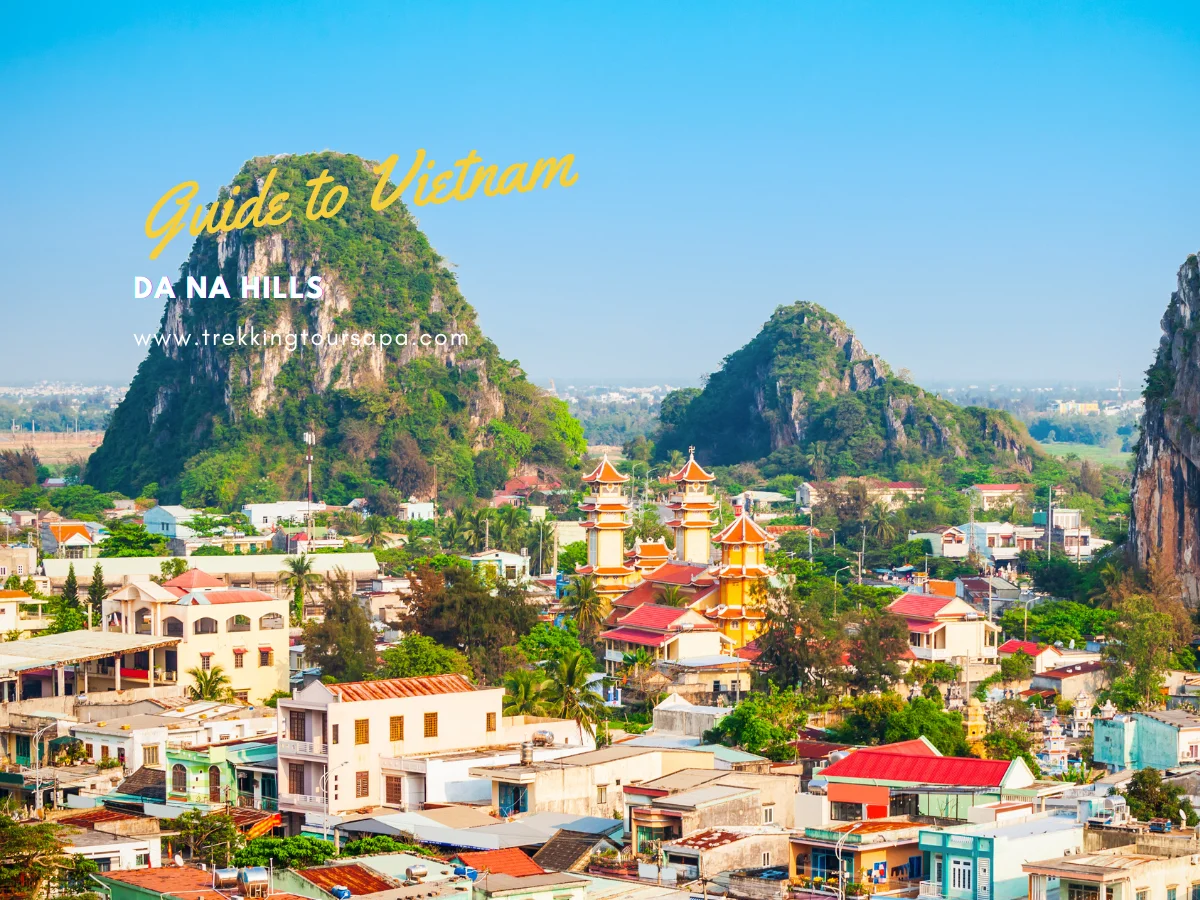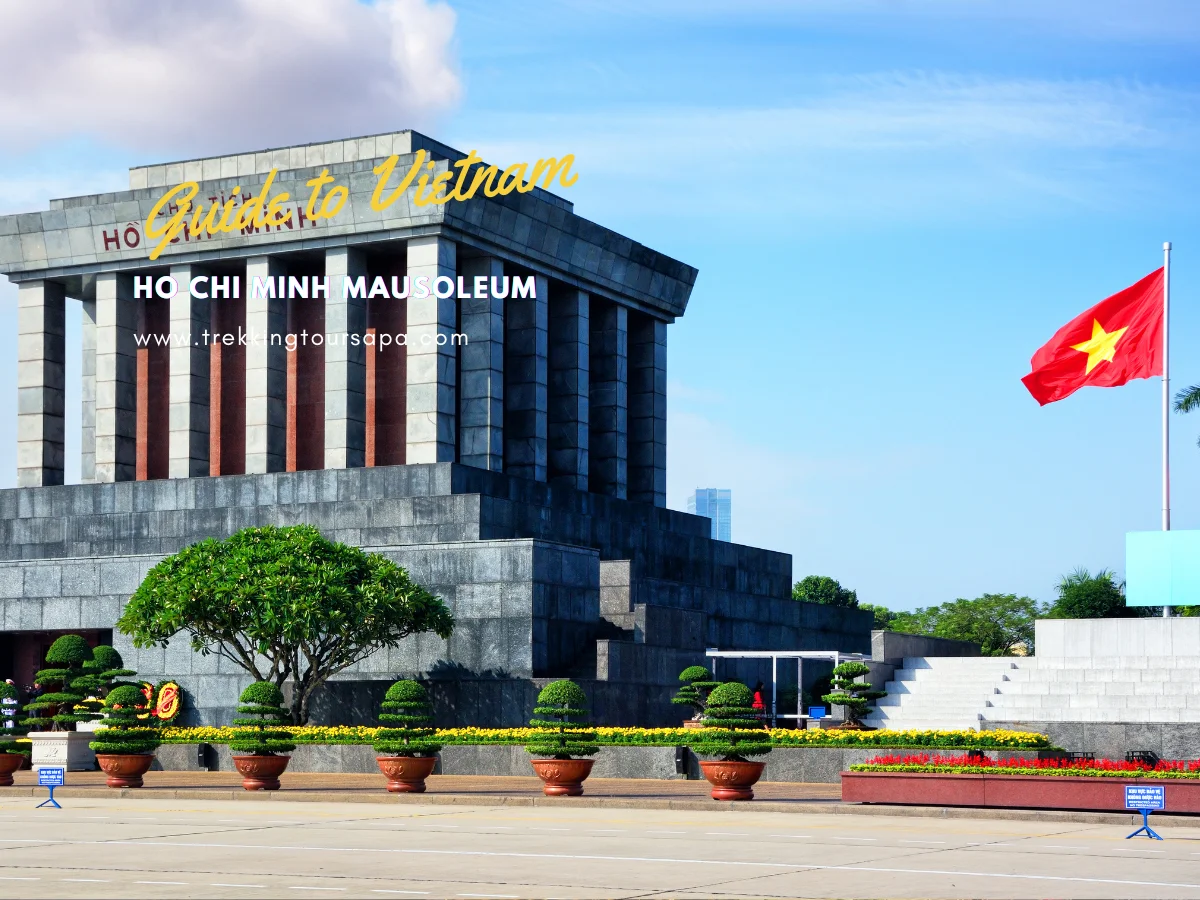Are you yearning for a taste of freedom, a chance to immerse yourself in the natural beauty of Vietnam? Look no further than the breathtaking rice fields that span this captivating country. From the northern terraces to the southern plantations, Vietnam’s rice fields offer a mesmerizing glimpse into its rich agricultural traditions. And if you’re wondering when is the best time to witness these vibrant landscapes, we’ve got you covered.
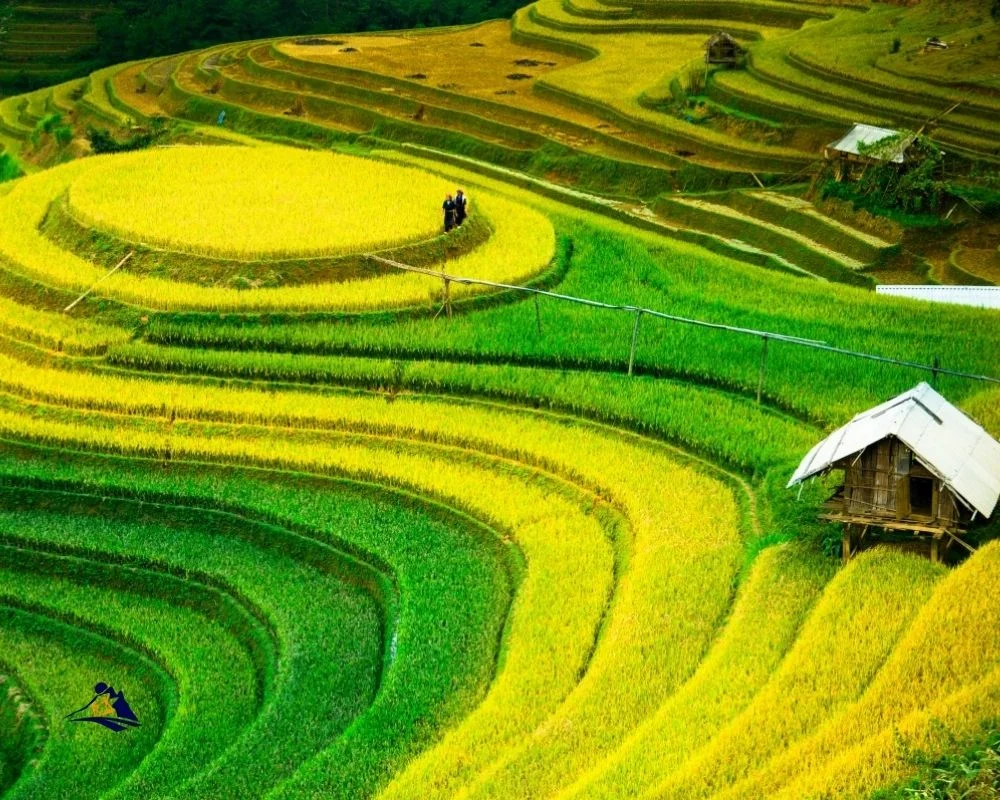
Picture yourself standing amidst the rolling hills of Sapa in September or October, as golden hues blanket the terraces like a warm embrace. The harvest season is in full swing, and it’s a sight that will leave you awestruck.
Or perhaps venture further north to Mu Cang Chai, where some of Vietnam’s most stunning rice terraces await. In these remote mountainous regions, April and May are prime months to see nature at its finest as farmers prepare their fields for planting.
Whether it’s witnessing transplanting rituals in the Mekong Delta or capturing the beauty through your lens with photography tips in mind, there’s no shortage of ways to experience Vietnam’s rice fields and savor the freedom they evoke.
Table of Contents
ToggleExploring Vietnam’s Northern Rice Terraces in September and October
September and October are the ideal months to venture into Vietnam’s northern regions and witness the breathtaking beauty of its rice terraces. As you embark on your journey, prepare to be captivated by the stunning mountain landscapes that surround you. Lace up your hiking boots and explore the numerous hiking trails that wind through these terraced fields, offering you a unique vantage point to appreciate their grandeur.
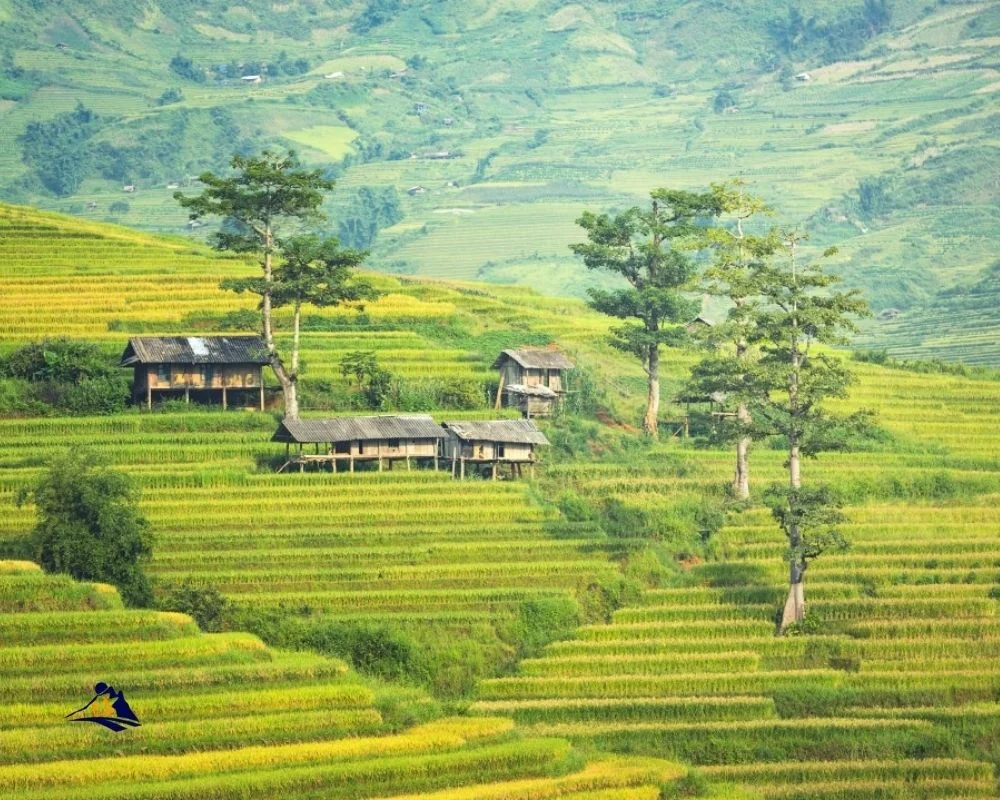
While immersing yourself in this natural wonder, don’t forget to indulge in the local cuisine. Try traditional dishes made from freshly harvested rice, such as com lam (bamboo-cooked rice) or xoi (sticky rice). You’ll also have the opportunity to learn about traditional farming methods passed down through generations in ethnic minority communities. Engage with friendly locals who will share their knowledge of water buffalo farming techniques and introduce you to their sustainable way of life.
During your visit, consider staying in one of the charming homestay accommodations available in these rural areas. This allows you to fully experience the local culture firsthand and support sustainable tourism initiatives. Explore nearby villages where skilled artisans create beautiful handicrafts using materials found in nature. And don’t miss out on visiting vibrant rural markets where you can mingle with locals and purchase fresh produce and handmade goods.
Sapa 1 Day Tours
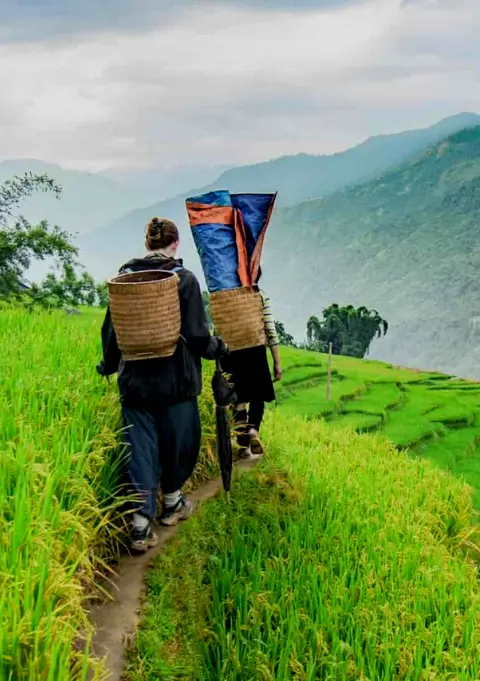
- 1 day experience
- Moderate to challenging
- Cultural immersion & active adventure
- Rice fields, valleys & villages
- Private tours
- Vegan-friendly
Sapa 2 Day Tours
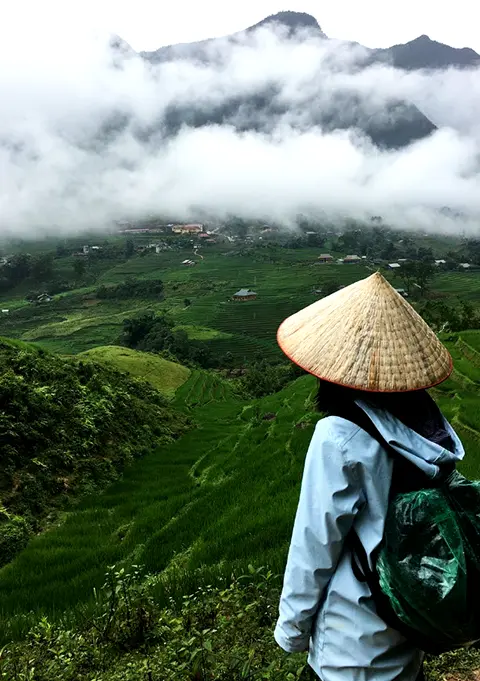
- 2 days 1 night experience
- Moderate to challenging
- Cultural immersion & active adventure
- Mountains, valleys, rice fields and villages
- Private tours
- Vegan-friendly
Sapa 3 Day Tours
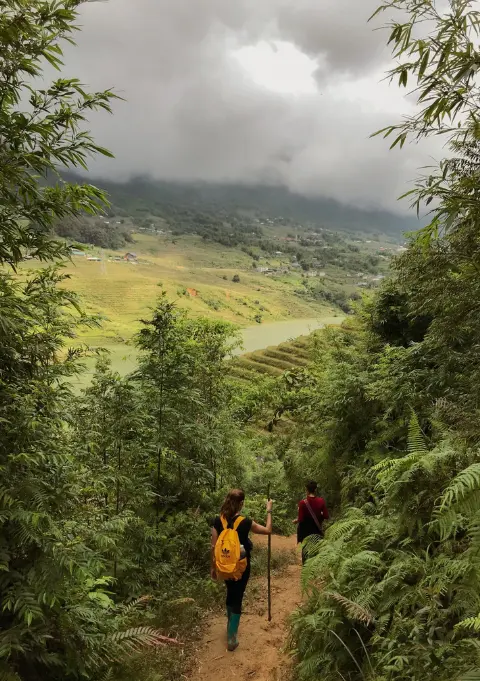
- 3 days 2 night experience
- Moderate to challenging
- Cultural immersion & active adventure
- Mountains, valley, rice fields & villages
- Private tours
- Vegan-friendly
Sapa 4 Day Tours
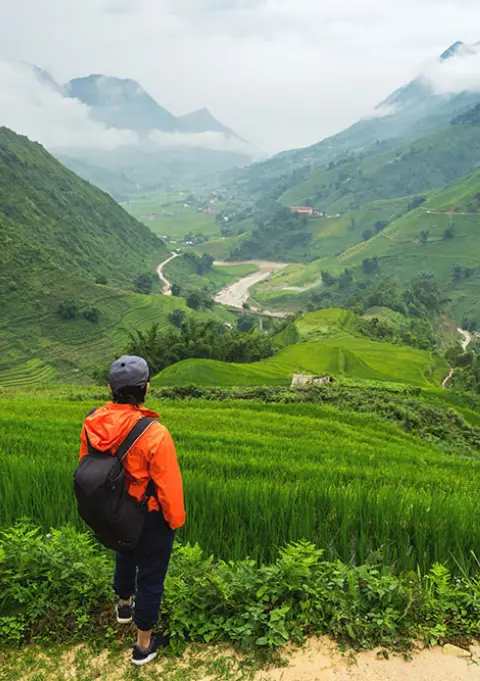
- 4 days 3 night experience
- Moderate to challenging
- Cultural immersion & active adventure
- Mountains, valleys, rice fields & villages
- Private tours – Less Touristic
- Vegan-friendly
As you immerse yourself in this enchanting world, witnessing firsthand how rice cultivation sustains entire communities, it’s impossible not to feel a sense of freedom wash over you. But there is more to discover beyond September and October; let’s move onto witnessing the golden harvest: best time to see rice fields in Sapa!
Witnessing the Golden Harvest: Best Time to See Rice Fields in Sapa
For a breathtaking experience, venture to Sapa and witness the stunning golden harvest of rice fields. The best time to see this mesmerizing sight is during September and October, when the rice terraces are at their peak beauty.
As you arrive in Sapa, you’ll be greeted by rolling hills covered in vibrant greenery. From afar, you can already catch a glimpse of the golden hues that indicate the ripe rice ready for harvesting.

To fully immerse yourself in the beauty of Sapa’s rice fields, here are four things you must do:
- Take a hike: Put on your walking shoes and explore the trails that wind through the rice terraces. Feel the cool breeze on your face as you navigate through narrow paths surrounded by endless stretches of golden crops.
- Meet the locals: Interact with the friendly Hmong and Dao ethnic minority groups who call Sapa home. They’ve been cultivating these fields for generations and can share fascinating stories about their way of life.
- Capture the moment: Bring your camera along to capture stunning photographs of this picturesque landscape. Whether it’s a close-up shot of individual stalks or a panoramic view of vast fields, every angle offers an opportunity for a breathtaking shot.
- Taste local delicacies: After witnessing such natural beauty, treat yourself to some delicious local cuisine made from fresh ingredients grown in these very fields. Indulge in steaming bowls of fragrant rice noodles or try traditional dishes like ‘thang co,’ a hearty soup made from horse meat.
Sapa 1 Day Tours

- 1 day experience
- Moderate to challenging
- Cultural immersion & active adventure
- Rice fields, valleys & villages
- Private tours
- Vegan-friendly
Sapa 2 Day Tours

- 2 days 1 night experience
- Moderate to challenging
- Cultural immersion & active adventure
- Mountains, valleys, rice fields and villages
- Private tours
- Vegan-friendly
Sapa 3 Day Tours

- 3 days 2 night experience
- Moderate to challenging
- Cultural immersion & active adventure
- Mountains, valley, rice fields & villages
- Private tours
- Vegan-friendly
Sapa 4 Day Tours

- 4 days 3 night experience
- Moderate to challenging
- Cultural immersion & active adventure
- Mountains, valleys, rice fields & villages
- Private tours – Less Touristic
- Vegan-friendly
As you leave behind Sapa’s golden harvest, get ready to explore Mu Cang Chai, another region famous for its stunning rice terraces located in northern Vietnam.
Mu Cang Chai: The Stunning Rice Terraces of Northern Vietnam
Explore the breathtaking region of Mu Cang Chai and be captivated by its stunning rice terraces that stretch as far as the eye can see. Imagine standing on a hilltop, gazing down at a landscape blanketed with vibrant shades of green. The terraced landscapes of Mu Cang Chai are an awe-inspiring sight to behold, showcasing the harmony between nature’s beauty and human ingenuity. As you take in the view, you’ll be transported to a world where rural life thrives amidst the undulating fields.

In this remote corner of Northern Vietnam, local communities have perfected farming techniques that have been passed down through generations. These sustainable agriculture practices are deeply rooted in traditional farming methods, ensuring that the land is cared for and able to provide sustenance for years to come. As you explore these terraced landscapes, you’ll gain a deeper appreciation for the intricate system behind rice cultivation. From planting seeds to harvesting golden grains, every step in the process is carried out with precision and respect for nature.
Beyond their agricultural significance, Mu Cang Chai’s rice terraces offer more than just breathtaking views. Hiking trails wind through the region, allowing visitors to immerse themselves in nature while witnessing firsthand how ethnic minority cultures coexist with their natural surroundings. This ecotourism opportunity not only provides an escape from city life but also promotes cultural exchange and understanding. You may encounter locals tending their crops or participating in traditional festivals, offering glimpses into a way of life that remains largely untouched by modernity.
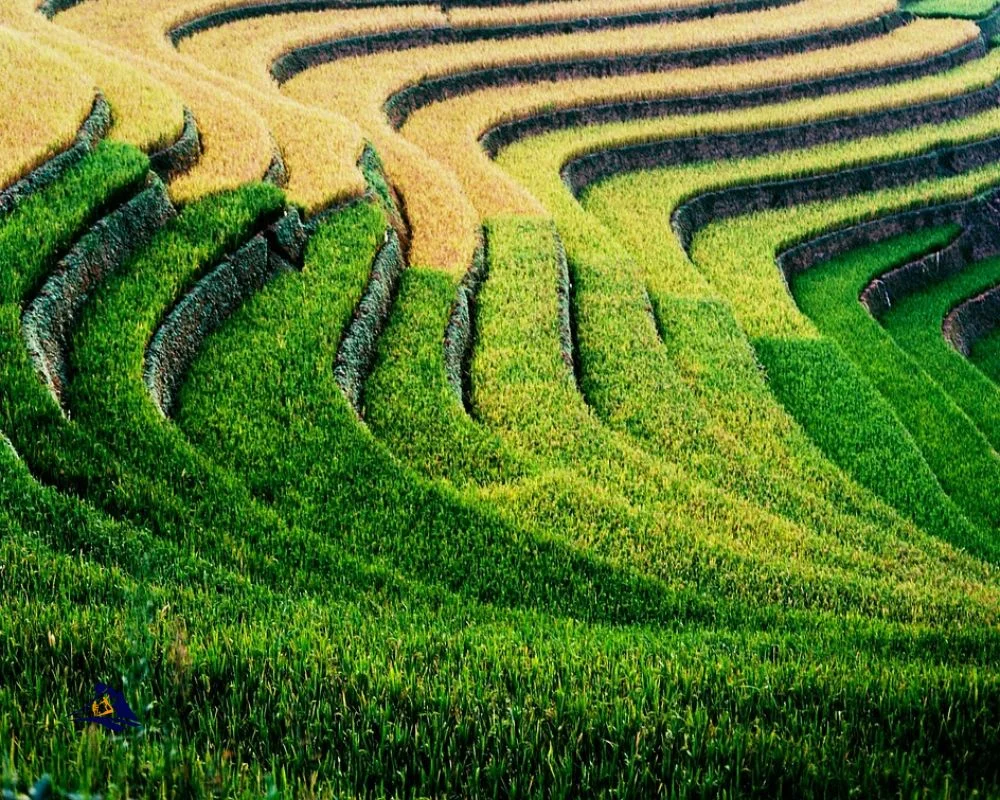
As your journey through Mu Cang Chai draws to a close, you’ll find yourself yearning for even more encounters with Vietnam’s captivating rice fields. Transitioning seamlessly into the subsequent section about ‘the beauty of Vietnam’s southern rice fields: May to June planting season,’ let us delve into another mesmerizing chapter where lush green expanses await your exploration . Here, amidst the gentle breeze and the symphony of chirping birds, lies a paradise of vibrant emerald hues that will leave you breathless.
The Beauty of Vietnam’s Southern Rice Fields: May to June Planting Season
Get ready to be mesmerized by the breathtaking beauty of Vietnam’s southern rice fields during the enchanting May to June planting season.
As you explore this region, you’ll encounter a landscape that is truly a feast for the eyes. Imagine standing along the banks of Southern Vietnam’s rivers, where vast expanses of vibrant green rice terraces stretch as far as the eye can see.
The local farming techniques employed here are fascinating to observe, with farmers carefully tending to their crops using traditional methods passed down through generations.

In these southern rice fields, you’ll also discover unique varieties of rice that thrive in this fertile environment. From fragrant jasmine rice to sticky glutinous rice, each type offers its own distinct flavor and texture.
As you immerse yourself in the rural countryside charm, you may even come across water buffalo companions grazing peacefully amidst the lush greenery. These gentle creatures have long been integral to traditional farming rituals and add an authentic touch to your experience.
One of the highlights of visiting Vietnam’s southern rice fields is witnessing the breathtaking sunsets that paint the sky with hues of orange and pink. As dusk settles over the land, take a moment to appreciate not only nature’s beauty but also the sustainable agriculture practices at play.
This region is known for its commitment to eco-tourism opportunities and sustainable farming methods that preserve both the environment and cultural heritage. And when it comes time to satisfy your hunger, indulge in delicious rice-based cuisine prepared with locally grown ingredients, showcasing just how central this crop is to Vietnamese culture.
Sapa 1 Day Tours

- 1 day experience
- Moderate to challenging
- Cultural immersion & active adventure
- Rice fields, valleys & villages
- Private tours
- Vegan-friendly
Sapa 2 Day Tours

- 2 days 1 night experience
- Moderate to challenging
- Cultural immersion & active adventure
- Mountains, valleys, rice fields and villages
- Private tours
- Vegan-friendly
Sapa 3 Day Tours

- 3 days 2 night experience
- Moderate to challenging
- Cultural immersion & active adventure
- Mountains, valley, rice fields & villages
- Private tours
- Vegan-friendly
Sapa 4 Day Tours

- 4 days 3 night experience
- Moderate to challenging
- Cultural immersion & active adventure
- Mountains, valleys, rice fields & villages
- Private tours – Less Touristic
- Vegan-friendly
As you continue your journey through Vietnam’s captivating landscapes, prepare yourself for an immersive experience in experiencing the Mekong Delta: transplanting rice seedlings in Vietnam…
Experiencing the Mekong Delta: Transplanting Rice Seedlings in Vietnam
Immerse yourself in the cultural traditions of Vietnam as you witness the fascinating process of transplanting rice seedlings in the vibrant Mekong Delta. Transplanting techniques are a crucial part of traditional farming practices in this region, where rice is not only a staple food but also an integral part of the local identity. The labor-intensive process involves carefully uprooting young rice plants from their nursery beds and transferring them to flooded fields, ensuring proper water management for optimal growth.
Water management plays a vital role in rice cultivation, and farmers in the Mekong Delta have mastered the art of irrigation systems. They use intricate networks of canals and dikes to control water levels, allowing for efficient distribution throughout the fields. This ensures that each rice plant receives adequate moisture while preventing waterlogging or drought conditions. As you observe this intricate system at work, it becomes evident how essential it is to maintain soil fertility and optimize crop rotation for sustainable agriculture.

Pest control is another aspect that requires careful attention during rice transplantation. Farmers employ various methods to protect their crops from pests without relying heavily on chemical pesticides. Natural predators like ducks and fish are often introduced into the fields to keep pest populations under control, creating a harmonious balance within the ecosystem. Witnessing these innovative techniques firsthand adds depth to your understanding of traditional farming practices.
As you delve deeper into the captivating world of transplanting rice seedlings in Vietnam’s Mekong Delta, you begin to grasp just how much effort goes into every step of this agricultural process. From selecting suitable rice varieties for different growing conditions to adopting effective harvesting methods, every decision made by farmers contributes towards ensuring a bountiful harvest.
Sapa 1 Day Tours

- 1 day experience
- Moderate to challenging
- Cultural immersion & active adventure
- Rice fields, valleys & villages
- Private tours
- Vegan-friendly
Sapa 2 Day Tours

- 2 days 1 night experience
- Moderate to challenging
- Cultural immersion & active adventure
- Mountains, valleys, rice fields and villages
- Private tours
- Vegan-friendly
Sapa 3 Day Tours

- 3 days 2 night experience
- Moderate to challenging
- Cultural immersion & active adventure
- Mountains, valley, rice fields & villages
- Private tours
- Vegan-friendly
Sapa 4 Day Tours

- 4 days 3 night experience
- Moderate to challenging
- Cultural immersion & active adventure
- Mountains, valleys, rice fields & villages
- Private tours – Less Touristic
- Vegan-friendly
Now that we have unveiled some key aspects of these agricultural traditions, let’s explore when is the best time to visit Vietnam’s enchanting rice fields and witness their beauty firsthand.
Unveiling the Agricultural Traditions: The Best Time to Visit Vietnam’s Rice Fields
When you venture into the heart of Vietnam, a world of vibrant green landscapes and ancient agricultural traditions unfolds before your eyes. Exploring terraced landscapes carved into rolling hills, you witness the hard work and dedication that goes into maintaining these rice fields. Traditional farming techniques are passed down from generation to generation, ensuring that rural livelihoods thrive in this picturesque countryside.
The scenic beauty of Vietnam’s rice fields is truly awe-inspiring, with each season bringing its own unique charm. From the lush greenery of spring to the golden hues of autumn, every visit promises a visual feast.
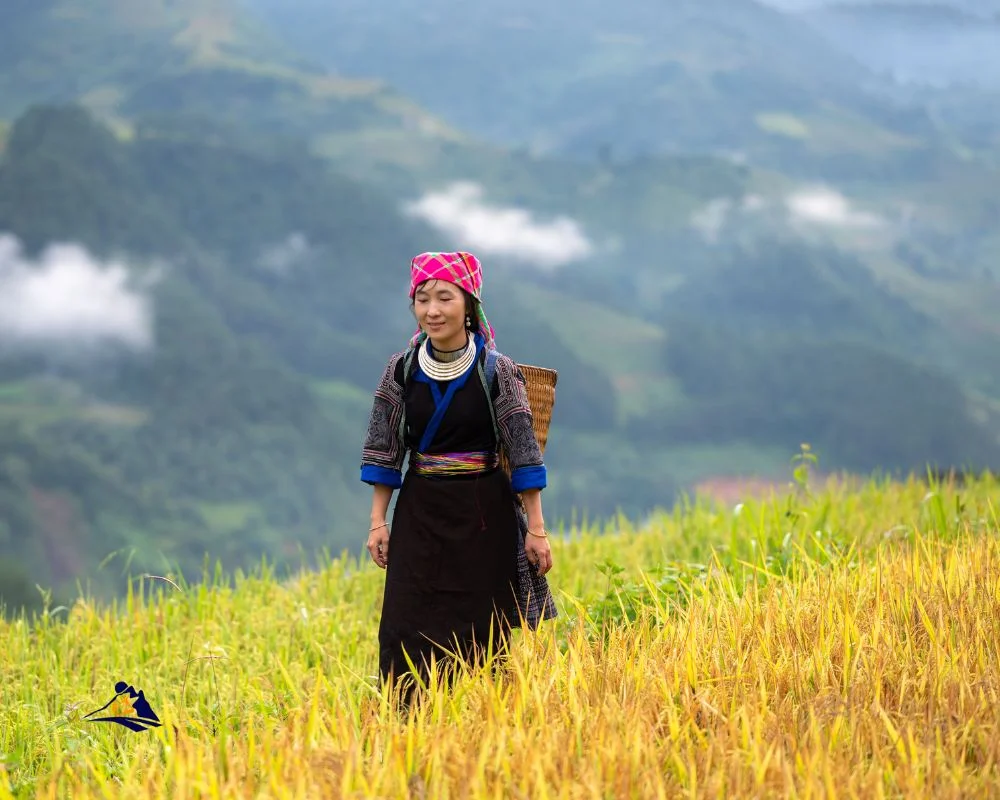
Apart from their natural beauty, Vietnam’s rice fields also hold significant cultural value. Agricultural festivals are held throughout the year, where locals come together to celebrate their heritage and pay tribute to their ancestors. These events offer a glimpse into traditional customs and practices that have shaped rural life for centuries. Moreover, sustainable farming practices are at the core of Vietnamese agriculture, ensuring that these breathtaking landscapes can be enjoyed for years to come.
As you immerse yourself in this rural paradise, don’t forget to savor the local cuisine that relies heavily on rice as its staple ingredient. From fragrant bowls of steaming pho to crispy banh xeo pancakes filled with fresh vegetables and shrimp, your taste buds will be treated to an explosion of flavors unique to this region. And if you’re interested in more than just sightseeing, there are plenty of opportunities for rural tourism. You can learn firsthand about traditional farming techniques by joining local farmers in planting or harvesting rice seedlings.
Sapa 1 Day Tours

- 1 day experience
- Moderate to challenging
- Cultural immersion & active adventure
- Rice fields, valleys & villages
- Private tours
- Vegan-friendly
Sapa 2 Day Tours

- 2 days 1 night experience
- Moderate to challenging
- Cultural immersion & active adventure
- Mountains, valleys, rice fields and villages
- Private tours
- Vegan-friendly
Sapa 3 Day Tours

- 3 days 2 night experience
- Moderate to challenging
- Cultural immersion & active adventure
- Mountains, valley, rice fields & villages
- Private tours
- Vegan-friendly
Sapa 4 Day Tours

- 4 days 3 night experience
- Moderate to challenging
- Cultural immersion & active adventure
- Mountains, valleys, rice fields & villages
- Private tours – Less Touristic
- Vegan-friendly
So plan your trip wisely and time your visit to Vietnam’s rice fields accordingly—a journey through changing seasons awaits!
Planning Your Trip: Timing Your Visit to Vietnam’s Rice Fields
Now that you’ve learned about the agricultural traditions and the best time to visit Vietnam’s rice fields, it’s time to plan your trip and make sure you time your visit just right.
There are several factors to consider when planning your trip, including weather considerations, best vantage points, local farming techniques, cultural significance, sustainable rice farming practices, guided tours and local guides, traditional rice dishes, accommodation options, transportation options, and recommended travel itineraries.

When it comes to timing your visit to Vietnam’s rice fields, weather is an important factor. The best time to see the lush green rice paddies is during the rainy season from May to September. This is when the fields are at their most vibrant and picturesque. However, if you prefer dry weather and want to avoid crowds of tourists, consider visiting during the shoulder seasons of April or October.
To get the best views of Vietnam’s rice fields, head to popular destinations like Sapa or Mu Cang Chai in northern Vietnam. These areas offer stunning vistas with terraced rice fields cascading down mountainsides. Another great option is Ninh Binh in central Vietnam where you can explore the Trang An Grottoes by boat and admire the surrounding countryside dotted with rice paddies.
Local farmers use traditional methods for cultivating their crops in Vietnam’s rice fields. Take a guided tour or hire a local guide who can explain these farming techniques and give you a deeper understanding of their cultural significance. You’ll learn about sustainable rice farming practices that have been passed down through generations and gain insight into the importance of this staple crop in Vietnamese cuisine.

As you plan your trip to see Vietnam’s rice fields, consider staying in accommodations that offer a unique experience such as homestays or eco-lodges located near the rice paddies. This will allow you to immerse yourself in the local culture and be closer to nature. Transportation options include hiring a driver or renting a motorbike to explore the countryside at your own pace.
Now that you have an idea of when and where to visit Vietnam’s rice fields, it’s time to think about capturing their beauty through photography. In the next section, we’ll provide you with tips and tricks for taking stunning photos of these breathtaking landscapes.
Capturing the Beauty: Photography Tips for Vietnam’s Rice Fields
To truly capture the awe-inspiring beauty of Vietnam’s rice fields, immerse yourself in the vibrant landscapes and let your camera lens transport you to a world filled with cascading terraces and lush greenery. When it comes to photography techniques, pay attention to lighting conditions as they can greatly enhance the visual impact of your images. The best time to shoot is during sunrise or sunset when the soft golden light bathes the fields in a warm glow. Experiment with different angles and compositions to create visually striking photographs. Don’t be afraid to get up close and personal with the rice plants, capturing their intricate details and textures.
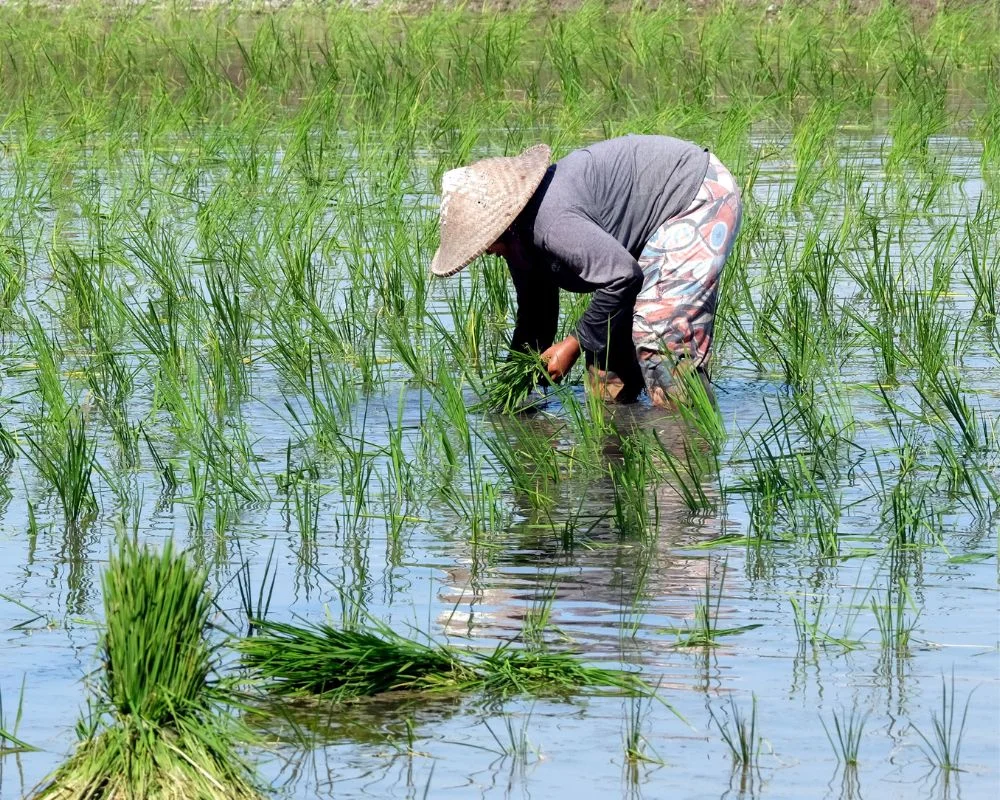
When it comes to camera equipment, a wide-angle lens is essential for capturing the vast expanse of the rice fields. Additionally, consider bringing a tripod for stability, especially if you want to photograph during low-light conditions or long exposure shots. Post-processing techniques can further enhance your images by adjusting colors, contrast, and sharpness. However, remember not to overdo it and maintain the natural beauty that drew you to these fields in the first place.
While capturing stunning visuals is important, don’t forget about capturing the local culture that surrounds Vietnam’s rice fields. Interact with locals and learn about their way of life. This will add depth and authenticity to your photographs, creating a narrative that goes beyond just pretty pictures. Look for unique perspectives that tell a story – whether it’s an elderly farmer working on his field or children playing amidst terraces.
Now that you’ve mastered photography tips for Vietnam’s rice fields, it’s time to explore beyond this natural wonderland into other fascinating destinations in Vietnam.
Exploring Beyond the Rice Fields: Other Natural Wonders of Vietnam
Don’t miss out on the opportunity to discover the other breathtaking natural wonders that Vietnam has to offer beyond its iconic rice fields. As you venture into the countryside, you’ll come across water buffalo, the traditional farming companions of the locals. These gentle creatures add a touch of authenticity to the landscape and provide a glimpse into the traditional way of life in rural Vietnam.
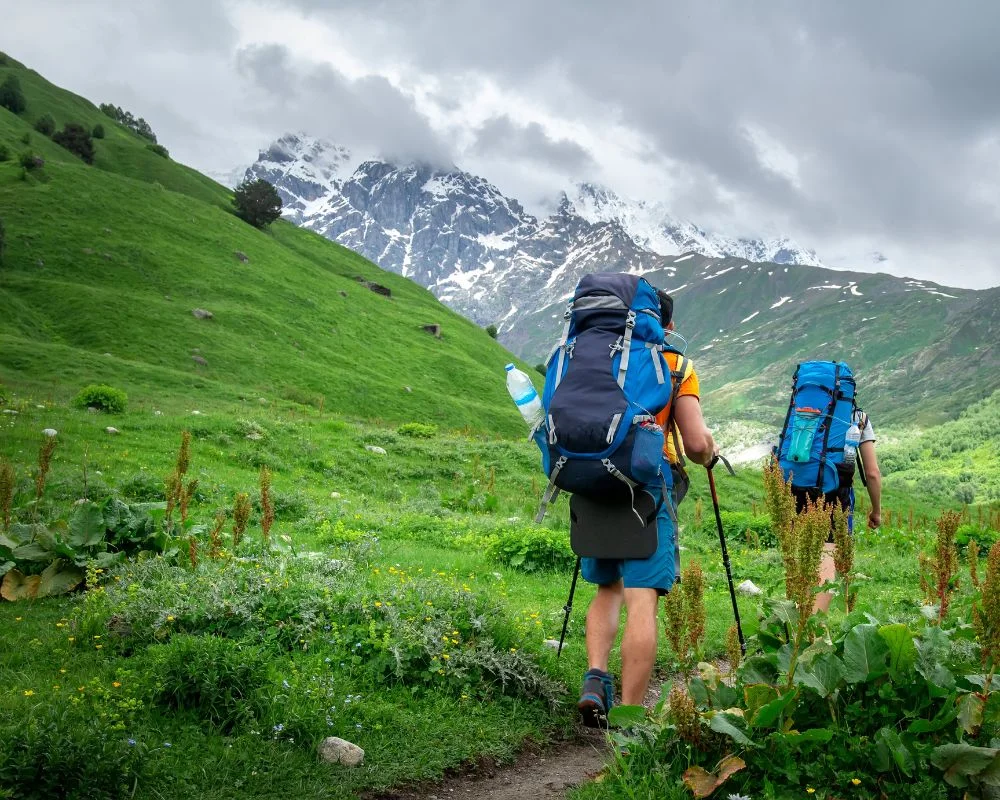
One of the best ways to explore Vietnam’s natural beauty is through ecotourism opportunities. Whether it’s trekking through lush forests, discovering hidden waterfalls, or exploring caves and limestone formations, there are endless adventures awaiting nature enthusiasts. The country’s diverse ecosystems provide a habitat for various plant and animal species, making it an ideal destination for wildlife lovers and birdwatchers alike.
Vietnam’s landscape is not only defined by its rice fields but also by its breathtaking mountain landscapes and coastal wonders. From towering peaks in Sapa to pristine beaches in Phu Quoc, each region offers unique experiences for travelers seeking freedom in nature. Immerse yourself in these stunning surroundings and witness firsthand the beauty that Vietnam has to offer.
Sapa 1 Day Tours

- 1 day experience
- Moderate to challenging
- Cultural immersion & active adventure
- Rice fields, valleys & villages
- Private tours
- Vegan-friendly
Sapa 2 Day Tours

- 2 days 1 night experience
- Moderate to challenging
- Cultural immersion & active adventure
- Mountains, valleys, rice fields and villages
- Private tours
- Vegan-friendly
Sapa 3 Day Tours

- 3 days 2 night experience
- Moderate to challenging
- Cultural immersion & active adventure
- Mountains, valley, rice fields & villages
- Private tours
- Vegan-friendly
Sapa 4 Day Tours

- 4 days 3 night experience
- Moderate to challenging
- Cultural immersion & active adventure
- Mountains, valleys, rice fields & villages
- Private tours – Less Touristic
- Vegan-friendly
Transitioning into immersing in the culture: traditional festivals and celebrations in rice-growing regions of Vietnam without writing ‘step,’ there are also opportunities to delve into local cuisine while exploring these natural wonders.
Immersing in the Culture: Traditional Festivals and Celebrations in Rice-growing Regions of Vietnam
Immerse yourself in the vibrant culture of Vietnam’s rice-growing regions and experience the rich traditions and colorful celebrations that bring these communities to life.
Traditional festivals and cultural celebrations play a significant role in showcasing the local customs and harvest traditions of these regions. The people deeply value their farming rituals, passed down through generations, as they believe it brings good fortune and bountiful yields.
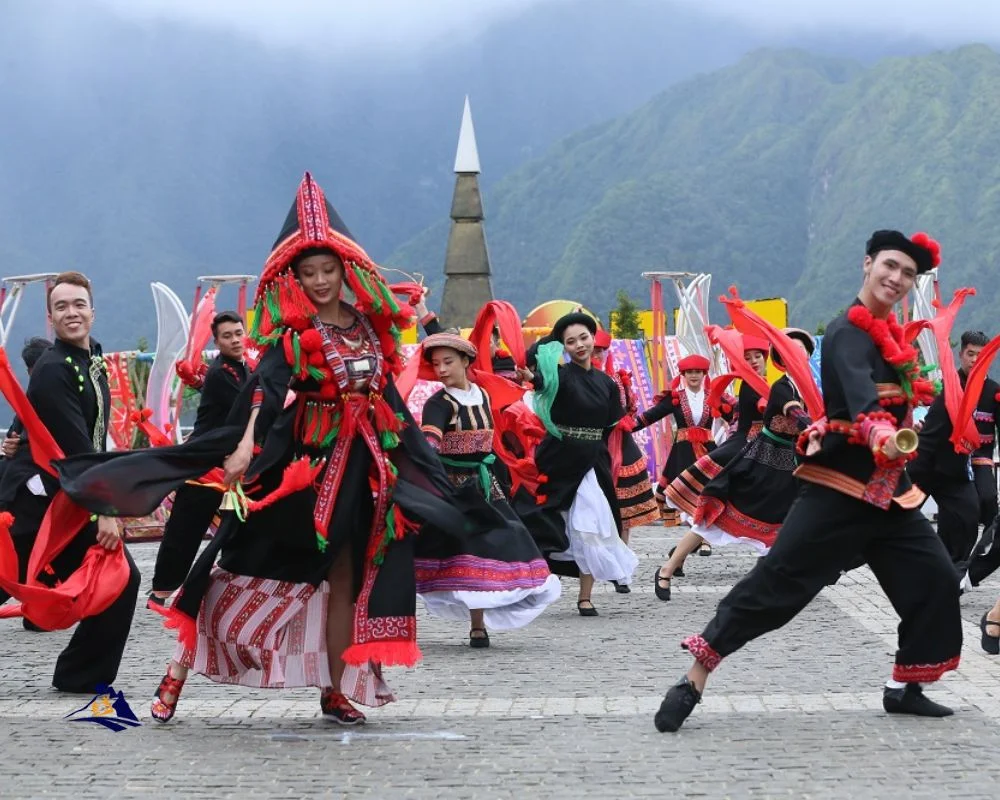
These festivals provide an opportunity to witness unique rice field traditions, indulge in traditional music and dance performances, savor delicious food prepared with love, and admire the intricate craftsmanship of traditional artifacts.
- Traditional Festivals: Participate in lively festivals such as Tet Trung Thu (Mid-Autumn Festival) or Tet Nguyen Dan (Lunar New Year), where locals come together to celebrate with lantern parades, dragon dances, fireworks displays, and vibrant street markets.
- Cultural Celebrations: Witness the joyous celebration of the harvest season during the Doan Ngo Festival or Wandering Souls’ Day. This festival signifies purification by making sticky rice cakes called ‘banh troi’ or ‘banh chay,’ which are believed to ward off evil spirits.
- Local Customs: Engage in age-old customs like praying for ancestors at pagodas or temples during special occasions. Take part in communal activities like planting rice seedlings or joining a local family for a meal to truly understand their way of life.
- Food Traditions: Delight your taste buds with authentic Vietnamese cuisine prepared using fresh ingredients from the surrounding fields. Enjoy steaming bowls of pho, crispy spring rolls, fragrant grilled meats wrapped in rice paper rolls, and sweet desserts made from glutinous rice.
- Traditional Crafts: Explore traditional crafts such as weaving bamboo baskets or making pottery that have been perfected over centuries. Visit local artisans who skillfully create beautiful lacquerware or intricate embroidery pieces.
The enchanting atmosphere created by these festivals immerses you in a world where time seems to stand still. As you witness the vibrant colors, hear the rhythmic beats of traditional music, and watch graceful dance performances, you’ll feel a sense of freedom and liberation.
These celebrations allow you to escape the constraints of everyday life and embrace the spirit of joy and unity that permeates these rice-growing regions. So pack your bags, open your heart to new experiences, and journey into Vietnam’s rice fields to discover the magic of its rich cultural heritage.
Best Time To See Rice Fields In Vietnam Frequently Asked Questions
Can you visit the rice fields in Vietnam all year round?
Yes, you can visit the rice fields in Vietnam all year round. The best time to visit is during the harvest season when the weather is pleasant. Explore popular regions like Mekong Delta and Sapa, take guided tours or venture independently while supporting local farmers and learning about their sustainable practices. Immerse yourself in the cultural significance of rice in Vietnamese cuisine and witness local customs and traditions firsthand. Discover the beauty of these lush landscapes and feel a sense of freedom as you wander through endless fields of golden grains.
Are there any specific festivals or celebrations related to rice-growing regions in Vietnam?
Immerse yourself in the vibrant culture of rice-growing regions in Vietnam. Experience traditional farming practices, witness the breathtaking landscapes of terraced rice fields, and partake in lively harvest festivals. Discover the deep-rooted cultural significance of rice while enjoying homestays and tours.
Is it possible to participate in rice planting activities as a tourist?
You can have a truly immersive cultural experience by participating in rice planting activities as a tourist. Learn traditional farming methods, rice planting techniques, and connect with the local community while supporting sustainable tourism. It’s an authentic rural experience that allows you to learn about rice cultivation and connect with nature.
What are some other natural attractions to explore besides the rice fields in Vietnam?
Vietnam offers a plethora of natural attractions to explore. From majestic waterfalls and lush national parks to pristine beaches and captivating caves, the country’s diverse landscapes include towering mountains, enchanting forests, meandering rivers, serene lakes, abundant wildlife, and breathtaking islands.
Are there any specific photography tips for capturing the beauty of Vietnam’s rice fields?
To capture the beauty of Vietnam’s rice fields, use photography techniques like adjusting exposure and focusing on details. Take advantage of lighting conditions and compose your shots creatively. Experiment with camera settings, capture reflections and the golden hour glow. Include local farmers for an authentic touch. Try unique angles and consider post-processing techniques to enhance your images. The best lenses for this task are wide-angle or zoom lenses to capture the vast landscapes in all their glory.
Conclusion
When planning your trip to Vietnam, make sure to time your visit during the best season to see the breathtaking rice fields. September and October are perfect months for exploring the country’s northern rice terraces. During this time, you’ll witness the lush green fields turning into a golden harvest, creating a stunning visual spectacle.
One of the most popular destinations for viewing rice fields is Sapa. Located in northern Vietnam, Sapa offers mesmerizing views of terraced rice fields that stretch as far as the eye can see. The best time to visit Sapa is from September to October when the fields are at their peak beauty. Don’t miss out on capturing these picturesque landscapes with your camera!
Another must-visit location is Mu Cang Chai, known for its breathtaking rice terraces nestled among mountains and valleys. This region also boasts vibrant colors during September and October as the rice plants change from green to golden hues. Take a leisurely stroll through these terraces and immerse yourself in nature’s beauty.
If you’re looking to explore southern Vietnam’s rice fields, plan your visit between May and June during the planting season. During this time, you’ll witness farmers transplanting young seedlings into flooded paddy fields, creating a scene of hard work and dedication.
Don’t forget about experiencing the Mekong Delta region, where you can witness locals transplanting rice seedlings by hand. This unique cultural experience provides insight into traditional farming practices in Vietnam.
While visiting Vietnam’s beautiful rice fields should be a priority on your itinerary, don’t limit yourself only to these natural wonders. Venture beyond and discover other breathtaking landscapes such as majestic waterfalls or serene beaches.
Lastly, immerse yourself in Vietnamese culture by participating in traditional festivals and celebrations that take place within these rice-growing regions. Witnessing these events will deepen your understanding of local traditions and customs while enriching your overall travel experience.
So pack your bags and get ready to embark on an unforgettable journey through Vietnam’s rice fields. Whether you choose to visit the northern or southern regions, you’ll be captivated by the beauty of these landscapes and the rich cultural experiences they offer.
Sapa 1 Day Tours

- 1 day experience
- Moderate to challenging
- Cultural immersion & active adventure
- Rice fields, valleys & villages
- Private tours
- Vegan-friendly
Sapa 2 Day Tours

- 2 days 1 night experience
- Moderate to challenging
- Cultural immersion & active adventure
- Mountains, valleys, rice fields and villages
- Private tours
- Vegan-friendly
Sapa 3 Day Tours

- 3 days 2 night experience
- Moderate to challenging
- Cultural immersion & active adventure
- Mountains, valley, rice fields & villages
- Private tours
- Vegan-friendly
Sapa 4 Day Tours

- 4 days 3 night experience
- Moderate to challenging
- Cultural immersion & active adventure
- Mountains, valleys, rice fields & villages
- Private tours – Less Touristic
- Vegan-friendly
